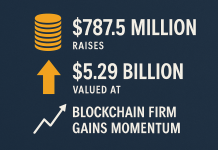[ad_1]
All the talk about stablecoins has people re-examining the actual value of crypto tokens and the associated markets. The discussion is particularly relevant during a bear assault on the whole crypto market, like the one we’re seeing now. Frequent Bitcoin commentator and Cornell professor Emin Gün Sirer believes there is a distinct difference between a coin that is pegged to a fiat currency and a coin that is “stable.” In a recent tweet, he noted that MakerDAO should be considered “stable,” because it uses algorithmic methods of achieving a stable ratio, while USDC and Tether should be considered “pegged,” in that they use simple methods and the banking system to retain a 1:1 ratio with fiat currency.
We need some nomenclature for “stablecoins.” Tether and MakerDAO are nothing alike.
*Peggedcoin*: A fiat-backed, fully-collateralized coin.
*Stablecoin*: A cryptoasset whose value is stabilized through algorithmic mechanismsOther suggestions are welcome.
— Emin Gün Sirer (@el33th4xor) October 1, 2018
We spoke to Bill Ottman, founder and CEO of Minds.com, a next-generation social networking site which outfits users with an Ethereum wallet and whose network pays users in Minds tokens for activity on the site. A single whole Minds token is worth the equivalent of 1,000 guaranteed views on the site. Rather than using any form of traditional advertising or tracking, Minds sells the tokens as well as issues them for user activity. On the subject of what a stablecoin is, Ottman spoke to the real-world value of the Minds token.
“A newsfeed impression is stable. The value changes according to different variables about the nature of that impression, but just raw chronological impressions – someone scrolling by it in their newsfeed, that is a thing. So that is a real-world value. It’s actually even arguably more stable than a dollar amount.”
Advertising budgets exist for a reason, and advertising remains the primary tool through which online content is funded. The growing network of more than 1 million users, many of whom veer toward the tech-savvy and crypto educated, represents a valuable market in which to advertise. According to Ottman, a single token currently costs around 15 cents, meaning that advertisers can squeeze a lot of impressions and potentially sales and/or interest with a relatively small budget.
The boost system works similarly to the one on other networks like Facebook: the advertiser or user creates a piece of content and then pays in tokens to boost it for a certain number of impressions. At the same time, Minds.com does not participate in direct censorship of content — although sensitive content can be labeled as such — or charge content creators for access to their audience. The ability to grow an organic following on Minds, of verifiably real people, is significantly enhanced over the current reality at Facebook, where paid-for posts are given priority, and content that users are subscribed to is not readily apparent in subscription feeds.

The Minds token — an ERC-20 token that runs on the Ethereum network — is pegged to the value of 1,000 impressions, and it is unique in this way. It always has a redemption value of 1,000 views on the Minds network, regardless of the future cost of a token. As the network grows and a wider variety of users gets on board, the real-world value of the token may increase in terms of fiat cost as well as actual conversion rates of content which is boosted. Ottman says that in the near future users will be able to opt-in to targeted advertising, which will certainly increase the potential of conversions on the platform. This is diametrically opposed to the model of Facebook, which harvests users data, interests, photos, and so forth and sells the information to advertisers wholesale, giving them access to users. Instead, users who are actively incentivized to be on the site are offered the ability to see things which may be of interest to them.
Ottman believes that the Minds token can be classified as a “semi-stablecoin,” in that you get out at least what you expect when you put value in. Having recently completed a funding round, Minds intends to continue to build its platform and work on expanding its network. It has a vibrant referral program, wherein users who get their friends to make the jump are rewarded with boost tokens, and a steadily growing user count. Its commitment to anti-censorship has meant that certain communities have gravitated faster than others, but ultimately the platform itself is intended to be neutral.
Images from Shutterstock
Get Exclusive Crypto Analysis by Professional Traders and Investors on Hacked.com. Sign up now and get the first month for free. Click here.
Advertisement
http://platform.twitter.com/widgets.js
[ad_2]
Source link




